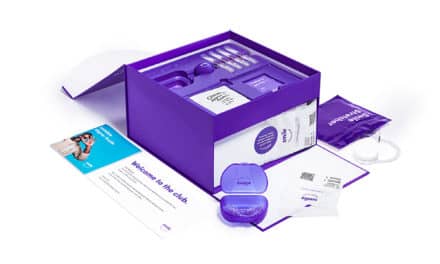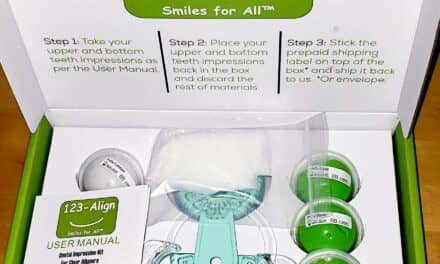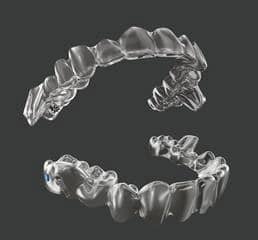by Christopher Piehler
A snapshot of how our readers use this aesthetic treatment
Every issue of this magazine presents readers with new, ever-advancing products, but how many orthodontists actually go beyond basic brackets and wires in their practices? To find out, Orthodontic Products has launched a series of reader surveys that will continue throughout the year. The goal of our first survey was to discover if and how our readers use clear aligners. To gather our data, we sent an e-mail survey, with the incentive of a $50 gift card for filling it out. We received a total of 187 responses, although not all respondents answered all of the questions (and some questions allowed for more than one answer). In the accompanying charts, each answer is labeled with the percentage and the number of respondents who gave that answer. Here’s what they said.
Approximately how many cases do you start each year?
The plurality of respondents (36.4%) said that they start fewer than 100 cases per year. If we cluster the top three answers together, we find that 81.9% of respondents start fewer than 300 cases annually. However, 4.3% did say that they start more than 600 cases a year, so the survey does have input from practices with widely varying patient volumes.

What percentage of patients would you say you treat with aligners?
A strong majority (61%) of respondents who use aligners said that they treat 10% of their patients with those removable appliances. If we look further, according to our numbers, 87.7% of orthodontists who use aligners treat between 10% and 30% of their patients with that modality. It is also worth noting that none of our respondents said that they treat 90% or more of their patients with aligners.
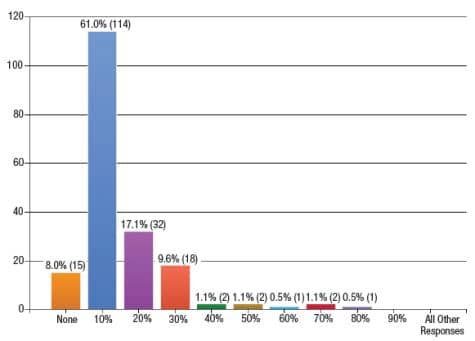
Has the number of cases you treat with aligners changed over the past year?
Based on these answers, we can safely say that aligner usage is here to stay. More than 50% of respondents said that their aligner usage has increased in the past year, while 30.3% answered that their aligner usage has held steady in the past 12 months. Only 18.9% said that they are using aligners for fewer cases now than they were a year ago.
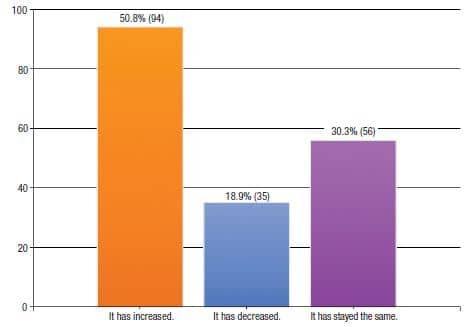
If you don’t use aligners, why not?
The vast majority (80%) of respondents who don’t use aligners cited “They don’t give me the results I want” as the reason why. Rounding out the top three answers were “They cost too much” (52.7%) and “I don’t want to depend on my patients’ compliance for treatment to succeed” (30.9%). Apparently, staff training was not an issue in this case: no respondents cited the need to teach their employees new skills as a reason not to use aligners.

What types of patients do you use aligners for?
Our respondents use aligners on patients of varying ages and with a variety of malocclusions. The clearest conclusion that can be drawn here is that what was once considered an appliance for adults only has moved firmly into the field of teen orthodontics. A whopping 72.3% of respondents said they use aligners on both adults and teens.

Do you use aligners in combination with other appliances?
A sizable majority of those we surveyed use aligners in conjunction with other appliances. Roughly a third (34.6%) of respondents said they only use aligners alone. The three most popular combinations were aligners and standard brackets (45.8%), aligners and self-ligating brackets (21.2%), and aligners with other removable appliances (12.8%).

On a scale from 1–10, how satisfied are you with the results you get using aligners?
The answers to this question ranged all over the map, but the strongest cluster was in the 7–9 range, which accounted for 61.7% of respondents. On the extreme ends of the spectrum, 3.8% of respondents put their satisfaction level at 1, and 2.7% put it at a perfect 10.
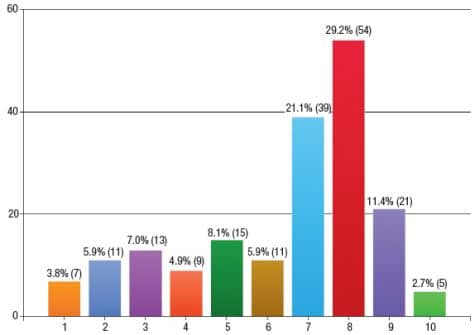
Our final question was, “What brand or brands of aligners do you use?” To avoid bias toward any brand, we asked this as an open rather than multiple choice question, and respondents could list as many brands as they cared to.
As a result, we discovered that some orthodontists use three or four different brands of aligners. However, Invisalign was the dominant name given by our respondents, 52.5% of whom said they use only that brand. Another 11.7% replied that they use Clear Correct and Invisalign, and 5.6% said they use only Clear Correct aligners. Other brands that were mentioned at least once include, in alphabetical order: 5 Align; Angel Align; AOA; ASO; Essix ACE; Five-Star Bioliner; Red, White & Blue; Simpli5; and Smart Moves. In addition, 4.5% of our respondents said they make aligners in-house or have them made to order at a local lab.
Clearly, aligners have become an indispensible part of the orthodontist’s armamentarium, and as products and techniques improve, their use should continue to expand.


